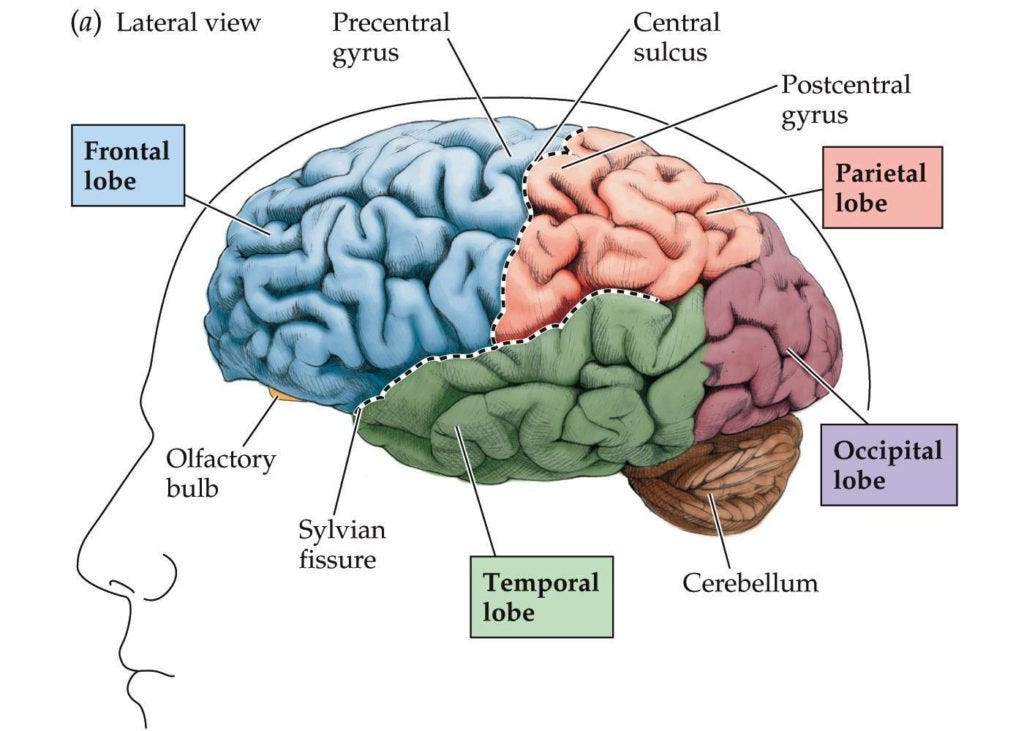Understanding the intricacies of brain anatomy and its functions isn't just for neuroscientists. As brand strategists, grasping how different areas of the brain influence behavior can significantly refine our approach to marketing. This post explores the major lobes of the brain, their functions, and how a nuanced understanding of these areas can shape better branding decisions.
For a deeper dive into how brain science can be applied to marketing and brand strategy, I recommend "Buyology: Truth and Lies About Why We Buy" by Martin Lindstrom.
Let’s get started:
The Frontal Lobe: The Strategist’s Studio
Command center, Decision-maker, Strategy hub, Control panel, Leadership core
Function: Command central for decision-making, planning, and impulse control. Appeals to rationality and executive decision-making processes.
LinkedIn’s "In It Together" Campaign
Strategist: Shannon Stubo Brayton, former CMO
LinkedIn launched the "In It Together" campaign to broaden the perception of its user base beyond white-collar professionals, showcasing a diverse range of professions from blue-collar workers to creatives. This strategy appealed to the frontal lobe by addressing career growth and professional networking needs, emphasizing LinkedIn as a versatile and essential tool for professional advancement in all fields.
By focusing on the logical aspects of career advancement and the utility of LinkedIn for diverse professional goals, the campaign successfully expanded the platform's user engagement across various job sectors. This approach also reinforced LinkedIn’s image as a comprehensive career development tool, helping to drive membership growth and increase active user engagement.
This refined focus on LinkedIn's campaign illustrates how targeting the frontal lobe's preference for structured, goal-oriented messaging can effectively resonate with a broad audience, encouraging them to see the platform as integral to their professional life, regardless of industry.
The Parietal Lobe: The Sensory Gallery
Perception center, Navigation hub, Sensory curator, Spatial processor, Interaction zone
Function: Processes sensory data and spatial navigation. Enhances experiences by appealing to spatial awareness and sensory integration.
Sephora’s Virtual Artist App
Strategist: Bridget Dolan, VP of Innovation
Sephora introduced an augmented reality feature in their app that allows users to try on makeup virtually. This strategy directly engages the parietal lobe by merging the digital and physical environments, offering a hands-on, immersive experience.
The Virtual Artist App not only increased engagement and time spent on Sephora’s digital platforms but also significantly boosted online sales as customers were able to experiment with products before purchasing.
The Temporal Lobe: The Emotional Auditorium
Memory bank, Emotion center, Narrative vault, Sentiment core, Recollection hub
Function: Key player in emotional response and memory retention. Targets emotional connections and memorable experiences.
Airbnb’s “Live There” Campaign
Strategist: Jonathan Mildenhall, CMO
Airbnb’s “Live There” campaign was crafted to contrast with the impersonal and touristy feel of hotels. The marketing emphasized living like a local and experiencing a destination as a resident rather than a tourist, tapping into the temporal lobe’s connection to emotion and memory.
This campaign resonated deeply, leading to increased bookings and a stronger emotional bond with the brand. It reinforced Airbnb’s image as a provider of unique, authentic travel experiences.
The Occipital Lobe: The Visionary’s Realm
Visual processor, Image center, Perception gallery, Sight hub, Aesthetic zone
Function: Dominates visual processing. Focuses on creating visually captivating and memorable brand imagery.
GoPro’s User-Generated Content
Strategist: Nick Woodman, Founder
GoPro capitalized on the visual processing power of the occipital lobe by encouraging users to share their adventurous experiences captured with GoPro cameras. The stunning visuals provided authentic, eye-catching content that highlighted the camera’s robust capabilities in dynamic environments.
This strategy not only showcased the product's durability and quality but also generated massive engagement across social platforms, cementing GoPro’s reputation as the go-to camera for adventure sports and activities.
Mastering the Art of Neuro-Branding
If this exploration of personality psychology has piqued your interest, you'll definitely want to check out my article on how the human brain can be categorized into different personality quadrants and more examples of how they’re being used today.










